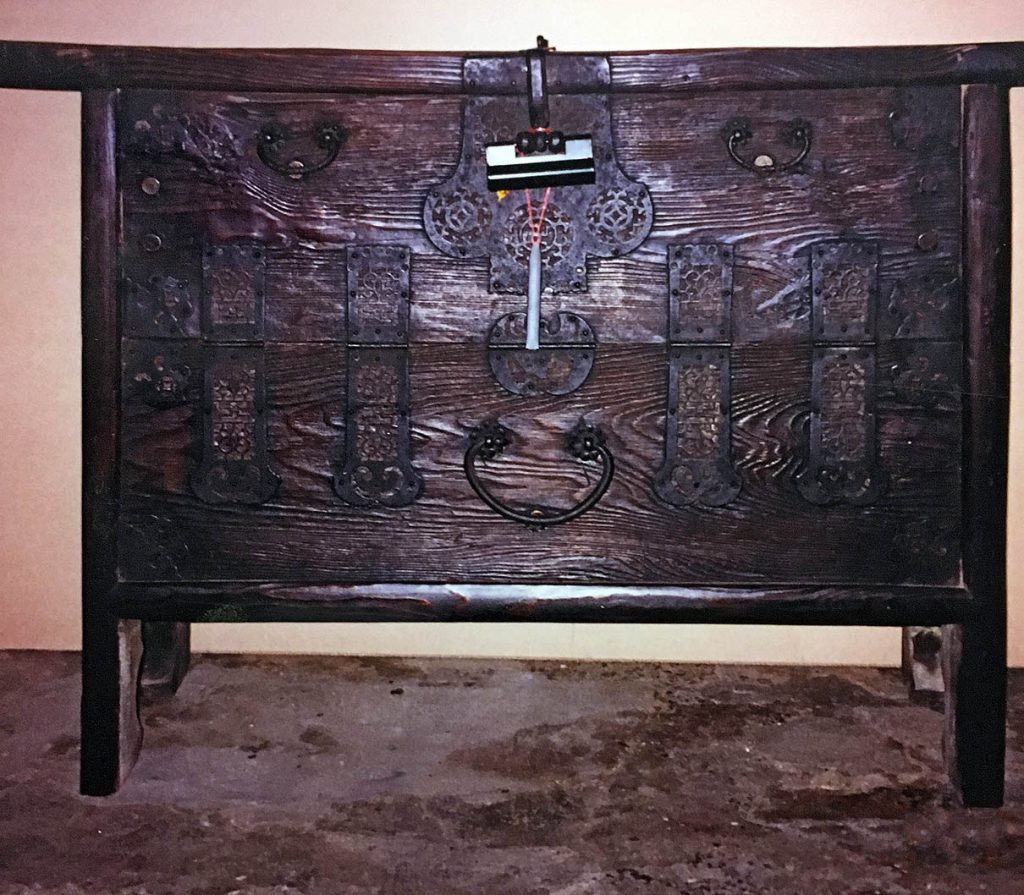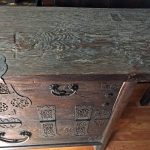
Circa 1850 or earlier; Zelkova wood, iron fittings; found on Kang Wha Island. H33” L55″ D16″

The Zelkova wood used for the construction of this magnificent chest is no ordinary wood. It has such impressive grain patterns resembling dragons the Korean craftsmen named it “Dragon Wood”. This wood was highly prized in both Korea and Japan as the dragon signifies a heavenly king. These Korean furniture craftsmen of old were connoisseurs of their trade, and they usually prefer an unusual wood to be relatively unadorned, letting the wood grain speaks for itself. The coiled dragon pattern is well-displayed on the top plank of this chest.
Chosen Dynasty era elite high officials and literati were Confucious scholars, adherent of Taoism and Buddhism. They favor furniture that has simplicity of form, made from wood that is dense, durable, and has distinguish grain patterns that stands up well in the serious and scholarly atmosphere in the male quarter of a Korean house. They also prefer the humble iron for metal fittings for to them, iron symbolizes strength, purity and practicality. The ironwork on the front panels is all hand-carved, finely wrought on unusually thick metalwork, with motives of the swastika, bat, coin, ruyi, and swallow tails all age-old auspicious ones, conforming to the taste of the ruling class. Decorations with thick metal carvings are not seen on furniture made in Korea today, making one with beautifully incised work very special.
This chest was found in Korea after the Japanese Occupation in a prison colony where many elite members of the Korean society were sent into exile. This scholar’s chest is certified to be from ca 1850 (19th century) but has the look of a piece of furniture from an earlier age, 18th century, and even 17th century. This is not surprising as during the latter half of the lengthy Chosen Dynasty (1392-1910), the very conservative and insular nature of the Korean society made Korea known as “The Hermit Kingdom”. Furniture-making traditions during this period was unchanged since at least the 17th century. The majority of extant furniture, therefore, dates to the 19th and early 20th century, although some 18th century, and more rarely, 17th century pieces exist, and most are found in museums.
This piece was recovered from the prison colony by an American missionary doctor who was honored by the Korean government and given Korean citizenship. He passed this chest on to his adopted Korean professor son who was one of only thirteen antique appraisers approved by the Korean government in the 1900s. He certified this chest as rare.